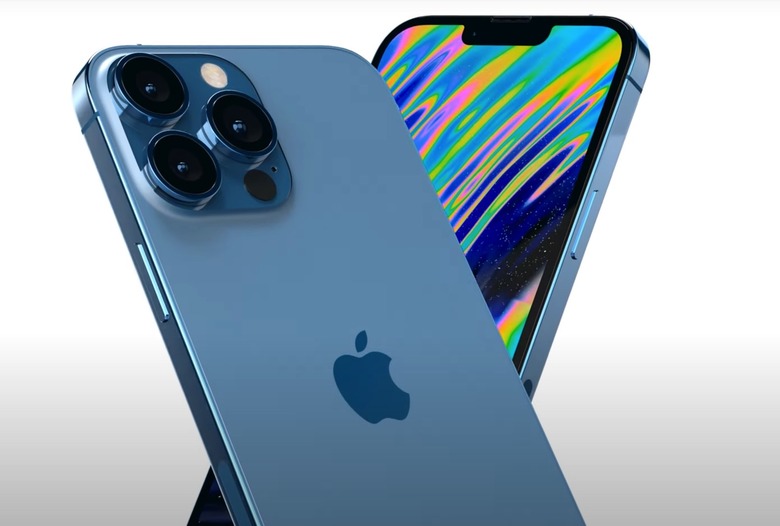The iPhone 13 Feature Fans Want Most Is Coming - Thanks To Samsung
The iPhone 12 is the best phone Apple made to date, and easily one of the last year's highlights. It's faster than all Android-based competitors, and it's outselling similarly-priced devices significantly. Despite the great hardware and exemplary sales, the iPhone 12 lacks one feature that's already considered mainstream on Android, a high refresh rate screen. Display supporting 90Hz and 120Hz refresh rates first arrived on Android gaming phones a few years ago before moving to regular flagships. Most of last year's handsets came with 120Hz displays, and the same goes for their 2021 successors.
Apple introduced its own 120Hz ProMotion screen technology with the iPad Pro well before Android vendors started using 120Hz OLED screens, prompting speculation that the iPhone would be next. Reports last year said that Apple had been considering 120Hz displays for the iPhone 12. Apple reportedly canceled those plans over battery life concerns. The high refresh rate screen did impact the battery life of 2020 handsets, like the Galaxy S21.
The iPhone 13 is again rumored to feature 120Hz screens, thanks to a technology that Apple launched with the Apple Watch a few years ago. A new report says that it's Samsung that will be the exclusive manufacturer of those LTPO screens.
The LTPO OLED screen debuted with the Apple Watch 4, allowing Apple to bring a highly coveted feature to the wearable a year later. The Apple Watch 5 supported always-on functionality, as the LTPO display turned down the refresh rate to 1Hz when the device wasn't actively used. iPhone 13 Pro and iPhone 13 Pro Max specs rumors say both feature similar technology. Dynamically adjusting the screen refresh rate is a key feature for ensuring excellent battery life on devices with high refresh rate displays. The Galaxy S21 comes with Samsung's own version of LTPO screens, and battery life is superior to the S20.
Korean news site The Elec learned that Samsung will be the exclusive supplier of LTPO OLED displays to Apple. The paper also cited forecasts from Omdia that said Samsung Display will supply 110 million OLED units for iPhone 12 and iPhone 13. LG Display will deliver 50 million OLED panels, and BOE will provide 9 million display units.
All iPhone 13 versions will feature OLED screens, just like their predecessors. But the cheaper iPhone 13 and iPhone 13 mini are expected to both feature 60Hz screens. A display industry insider said a few weeks ago that more than one iPhone 13 version will feature LTPO screens this year, without mentioning any specific models.
The Elec also notes that Samsung Electro-Mechanics will be supplying rigid-flexible printed circuit boards (RFPCB) to Apple for the iPhone 13 series. These components are used to connect the OLED panel with the mainboard. The report notes that Apple wants to use RFPCB for the two higher-tier models in the new iPhone series, while the cheaper versions will use FPCB.
"RFPCB is both rigid and can be folded, which allows for more convenient product deigns and faster transmission of electric signals. It is a higher value component than FPCB," The Elec writes. It's unclear whether the component is related to LTPO technology. The paper notes that "the two higher tier iPhones this year that will use RFPCB will have low-temperature polycrystalline oxide (LTPO) thin-film transistor (TFT) OLED panels."
Apple is widely expected to launch the iPhone 13 series in mid-September, reverting to the regular iPhone launch program after last year's pandemic-induced delay.
